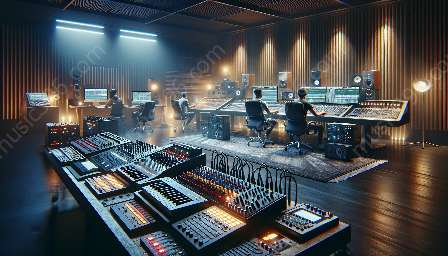Audio mixing is an art that plays a crucial role in shaping the final quality of a music composition. It involves blending different audio tracks to create a balanced and harmonious sound. Achieving a professional mix often requires the use of various techniques and tools, one of which is parallel processing.
Parallel processing in audio mixing involves duplicating a signal, processing it separately, and then blending it back with the original signal. This technique is widely used in music production to enhance the overall sound quality and create a more dynamic and powerful mix.
The Importance of Parallel Processing in Audio Mixing
Parallel processing offers several benefits that make it an indispensable tool in the realm of audio mixing. One of the key advantages is the ability to apply different processing techniques to the duplicated signal without altering the original signal. This allows for greater flexibility and creativity in shaping the sound of individual tracks or the overall mix.
Another significant advantage of parallel processing is its contribution to achieving a more impactful and polished sound. By blending the processed signal back with the original, engineers and producers can effectively enhance the dynamics, depth, and texture of the audio, ultimately elevating the quality of the mix.
Techniques of Parallel Processing
Several techniques are commonly employed in parallel processing to optimize the audio mixing process. Compression, EQ, and saturation are among the most widely used methods for processing the duplicated signal. Compression helps to control the dynamics, while EQ allows for precise tonal shaping, and saturation adds warmth and character to the sound.
Furthermore, parallel processing can also involve utilizing time-based effects such as reverb and delay to create a sense of space and depth within the mix. These effects, when applied in parallel, can significantly enhance the overall ambience and spatial characteristics of the audio.
Challenges and Considerations in Parallel Processing
While parallel processing offers numerous benefits, it is essential to approach it with a discerning mindset. Overusing parallel processing or applying excessive processing to the duplicated signal can lead to a loss of clarity and negatively impact the overall coherence of the mix.
Moreover, managing phase coherence between the original and processed signals is critical in parallel processing to avoid phase cancellation or comb-filtering artifacts. Careful attention to phase alignment and experimentation with polarity inversion may be necessary to ensure that the combined signals maintain a coherent and cohesive sound.
Parallel Processing in Modern Music Technology
The evolution of music technology has revolutionized the way parallel processing is implemented in audio mixing. Digital audio workstations (DAWs) now offer a wide array of plugins and tools specifically designed for parallel processing, making it more accessible and versatile than ever before.
Additionally, advancements in hardware and software have empowered engineers and producers to experiment with complex parallel processing chains, allowing for the creation of unique sonic textures and tonal adjustments. The integration of parallel processing within modern music technology has expanded the creative possibilities for audio professionals, enabling them to achieve innovative and impactful mixes.
In Conclusion
Parallel processing plays a pivotal role in the realm of audio mixing, offering a range of benefits that contribute to the enhancement of sound quality and creative expression. By leveraging techniques such as compression, EQ, saturation, and time-based effects in a parallel processing workflow, audio professionals can shape and refine the sonic characteristics of their mixes with precision and versatility.
As the landscape of music technology continues to evolve, the significance of parallel processing in audio mixing remains undeniable, empowering creators to realize their artistic visions and deliver compelling musical experiences to audiences worldwide.

























